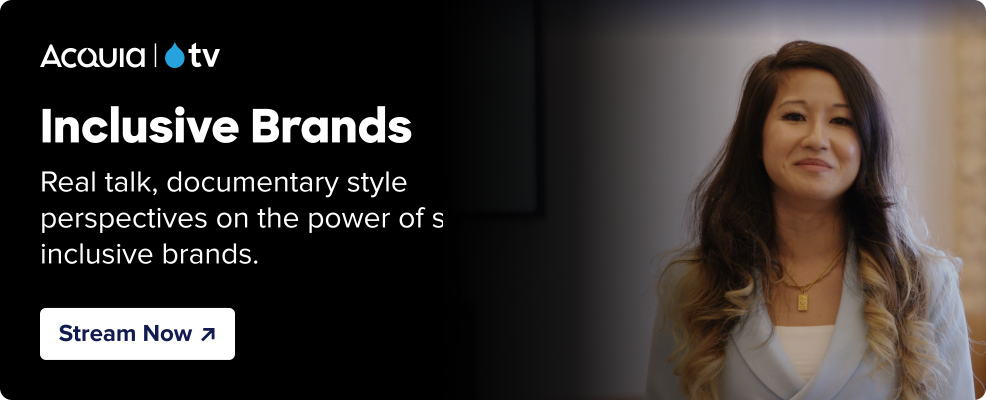Brand Storytelling: What It Is and Why It Matters

Nate Holmes
Sr. Manager, Product Marketing
Brand storytelling is an increasingly popular approach to marketing that taps into the foundational human need to connect with others through story. It’s a method that centers your customer as the main character in the narrative, not your brand or your product. When you share relatable stories about life experiences that matter to your audience, you create strong emotional connections with your ideal customers.
Those connections build brand awareness, keep attention on your marketing channels, and establish trust. Not everyone agrees on the best approach to brand storytelling, but everyone knows it matters. Let’s examine why brand storytelling is so important, look at examples of best practices, and explore some ideas for getting started. But first, let’s agree on a clear brand storytelling definition.
What is brand storytelling?
Brand storytelling uses narratives to create an emotional, value-driven connection between your customers and your brand. The most powerful stories are authentic and connect back to your brand values. |
Effective brand storytellers paint pictures of people, events, places, and experiences that connect audiences to the values a brand stands for. The great ones (e.g., Nike) do it without force-feeding anyone a direct narrative about their company, product, or offering. If you sell athletic equipment or are a pro sports team, you can tell stories about the thrill of the winning goal or the crushing disappointment of a missed free throw in overtime.
People are influenced by accounts of real-life challenges and victories, emotional responses to the ups and downs, and inside looks at the lives of other humans like them. Your task as a storyteller is to consistently make your brand and products part of a larger story that’s meaningful to your customers. That means you can’t just repetitively talk about your product or brand. Instead, tell stories about how people’s lives are impacted because of what you do. Share dreams for the future. Reminisce over shared histories.
Every channel from your website and social media presence to your product packaging and retail spaces provides opportunities to add life to your brand’s story. Make sure you weave all your individual stories together to create a brand experience that can build customer loyalty.
Why is brand storytelling important?
As with many things in life, people are more likely to connect to something on an emotional level. Sometimes, they can’t even explain why. Perhaps it reminds them of something from their childhood. Or, maybe there’s a positive resolution to a challenge they struggle with. It’s this emotional connection that creates bonds.
When it comes to brand storytelling, you want your brand identity, design, and content to create consistent, positive brand associations. And it’s the marketing team’s job to develop a strategy to do this.
But first, marketers need to understand their audience: what they want, what they need, and what keeps them up at night. Tapping into customer data to establish this understanding will help marketers create brand stories and positive experiences that resonate with their audience instead of just trying to make a sale. A marketing strategy that’s based around compelling stories and customer experiences is more likely to build and maintain strong brand loyalty over time.
Brand storytelling examples
Some brands have a meaningful story embedded in their company and product DNA (e.g., TOMS shoes) and some have to come up with a creative story that makes their product meaningful (e.g., most enterprise SaaS companies). From Warby Parker to Nike, here are some examples of some of the world’s best brand storytellers.
Warby Parker
Warby Parker transformed the eyeglass industry when they made designer eyewear affordable, better for the environment, and easy to try on at home. Their brand comes from a great story, too. One of their founders spent the first semester of grad school without eyeglasses because he lost his on a backpacking trip and they were too expensive to replace. He and his team decided to fix that problem and do it in a sustainable manner.
And recognizing that eyeglasses aren’t available to everyone — 1 billion people around the world need glasses and don’t have access to them — Warby Parker established the Buy a Pair, Give a Pair program. For every pair of Warby Parker glasses purchased, another is distributed to an individual in need. Warby Parker designed their brand with a meaningful story as a foundation and they use their channels, like Instagram and YouTube, to connect with the pop culture of the moment.
Airbnb
Airbnb is a marketplace, so the product itself isn’t worth telling a story about. Their audience doesn’t want to hear about the technology and filters that help them find places to stay; they want to hear stories about the experience of staying somewhere new. They want to know about the people they’re staying with. They want to know about the homes, the countries, and the experiences Airbnb’s brand makes possible.
No one can tell those stories better than hosts and travelers. On their YouTube channel (with over 646,000 subscribers) you can see what Airbnb is like in different countries, learn from superhosts, and get useful guest tips.
Burt’s Bees
Burt’s Bees started with a serendipitous hitchhiking encounter that led to the creation of one of the most well-known natural skincare brands in the world. The first product to hit it big was their lip balm made with beeswax, which is now found at just about every drugstore.
Burt’s Bees does an incredible job of telling their story on their website. They share their history in a visually appealing way that any brand can learn from, and their core values are prominently displayed. Everything from their imagery to their taglines match up with their brand story. With a solid brand identity established, they’ve built a strong foundation for some brilliant brand storytelling.
Over the years, Burt’s Bees has remained committed to conservation and projects that open access to green spaces and steward the land. Since its inception, the Burt’s Bees Foundation has issued $5 million toward this mission. They’re a great example of a brand with a solid identity that considers brand storytelling in everything that they do.
Nike
Nike established itself in people’s minds with great storytelling in the 1990s. At a time when commercials were pushing a hard sell (because TV airtime was expensive), Nike let Michael Jordan’s story speak for itself. “Just Do It” and the swoosh appear at the end, and that’s all the space their brand took up. The story made an emotional connection between the fans and the athlete — Nike itself was a tiny part of the exchange.
Fast-forward to today and Nike uses Instagram to share engaging videos and photos that inspire. Many of the stories you find on Nike’s social channels don’t push products directly. They inform, excite, and solve problems. This kind of brand storytelling connects with athletes and builds brand awareness and loyalty over time.
You might not ever have Nike’s $4.1 billion marketing budget,but you can learn from them and start to reach for the substance of their storytelling.
How to use brand storytelling in marketing
Incorporating brand storytelling into your marketing mix takes time and practice. It will help if you have brand guidelines so that no matter who’s telling your story, they’re conveying it consistently. Here are a few other things to keep in mind when you’re using brand storytelling as part of your marketing strategy.
Be helpful, not hype-ful
Telling real, authentic stories will resonate with your audience more than being overly promotional. Consider the communication you receive from your favorite brands. Are they making false promises? Offering unrealistic or unattainable solutions? Probably not because if it sounds too good to be true then it usually is. Find stories that communicate to your audience how you can help them. Being human in your marketing interactions will go a long way.
Incorporate your customers
Let your customers tell their own stories. Buyers want to understand if current users are satisfied before investing and 45% of shoppers won’t purchase a product if there are no reviews available for it. The power of reviews is seen in both B2C and B2B brands, and it’s possibly even more significant for B2B brands since the cost and time investments are usually quite steep. Incorporating quotes, testimonials, case studies, and review sites into your marketing strategy helps new customers feel more confident when they’re making a purchasing decision.
Deliver your story consistently
Brand guidelines are one way to ensure you’re telling a consistent story, but it also must be delivered consistently. Disjointed visuals, inconsistent logos, and outdated content can all lead to consumer mistrust. Incorporating tools like a content management system (CMS) and digital asset management (DAM) solution to support your brand guidelines and organize the brand assets used in your marketing efforts will help ensure the content being used is approved, on-brand, and easy to access. This makes it easier to tell and deliver consistent stories to your audience.
What’s next?
If you’re ready to get started with brand storytelling, use some of the examples above as inspiration and a roadmap for your own strategy. Create a solid foundational story about who you are, identify your values, areas of expertise, and outline the real-life challenges in those spaces. Find or create stories about experiences that are meaningful to your customers. Solve their problems and entertain them without trying to sell them a product or service.
When you’re ready, start putting your stories out into the world. Just remember, brand storytelling does not mean telling the story of your brand or product over and over again. Center stories around the experiences of real people and use them to show your customers that you care about the same things they do. Create an emotional connection. Sales will follow.
Brand storytelling is a complex mix of branding disciplines. To do it well, you need a solid brand identity, a brand management strategy, and a clear understanding of how to tell on-brand stories consistently.
To learn more about how Acquia can help with your brand storytelling efforts, request a demo or walkthrough of our digital experience platform (DXP).

This blog was originally published in 2022 and has been updated to remain current.


